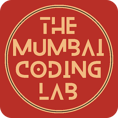Exploring the Internet of Things (IoT): Connecting the World One Device at a Time
"Exploring the Internet of Things (IoT)" delves into the transformative impact of IoT on various sectors, from smart homes to healthcare, highlighting its benefits, challenges, and future prospects.
Vinay
4/12/20247 min read
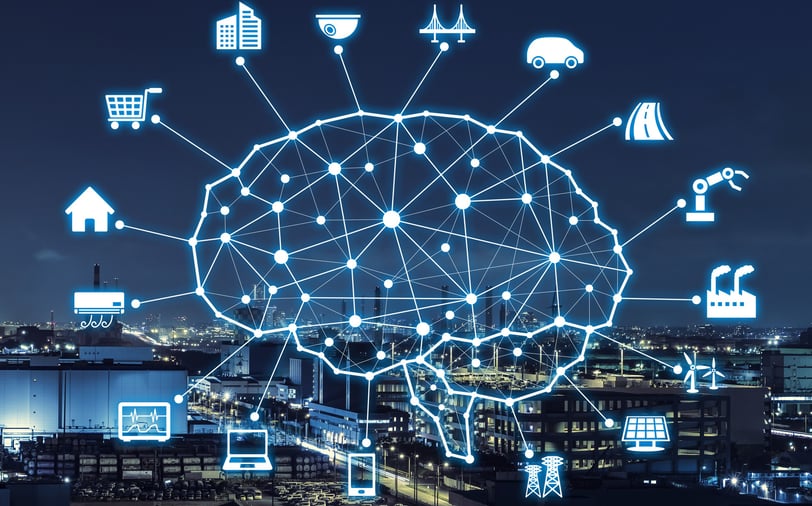

Introduction:
The Internet of Things (IoT) is revolutionizing the way we interact with the world around us, connecting everyday objects to the internet and enabling them to communicate and share data. In this blog post, we'll delve into the fascinating world of IoT, exploring its applications, benefits, challenges, and future prospects.
Understanding the Internet of Things:
The Internet of Things refers to the network of interconnected devices, sensors, and objects that collect and exchange data over the internet. These devices can range from smartphones and wearables to household appliances, industrial machinery, and smart city infrastructure. By embedding sensors, actuators, and communication modules into physical objects, IoT transforms them into "smart" devices capable of sensing, analyzing, and responding to their environment.
Applications of IoT:
Benefits of IoT:
Increased Efficiency: IoT streamlines processes, automates tasks, and optimizes resource utilization, leading to greater efficiency and productivity in various domains.
Improved Decision Making: IoT generates vast amounts of data that can be analyzed to gain insights, identify patterns, and make informed decisions in real-time.
Enhanced Convenience: IoT-enabled devices enhance convenience and simplify daily tasks by offering remote control, automation, and personalized experiences.
Cost Savings: IoT technologies help reduce operational costs, minimize downtime, and optimize resource usage, resulting in significant cost savings for businesses and consumers.
Enhanced Safety and Security: IoT solutions enhance safety and security by providing real-time monitoring, predictive maintenance, and early detection of potential risks or anomalies.
Challenges and Considerations:
Security and Privacy Concerns: IoT devices are vulnerable to cyberattacks, data breaches, and privacy violations, necessitating robust security measures and data protection protocols.
Data Management and Analytics: Managing and analyzing large volumes of IoT data requires scalable infrastructure, advanced analytics tools, and data governance frameworks to derive actionable insights.
Ethical and Social Implications: The widespread adoption of IoT raises ethical concerns regarding data ownership, surveillance, algorithmic bias, and the impact on society, underscoring the importance of ethical AI and responsible technology development.
Best Platform to Learn the IOT:
The Mumbai Coding Lab: designed for students of different age groups. Including Future Ready courses like IOT, Artificial Intelligence and Machine Learning & much more....,These hands-on robotics kits introduce students to robotics and coding concepts in a fun and accessible way, promoting creativity and experimentation.
The most important thing parents should look for while searching for robotics and coding schools is physical accessible distance and flexibility of physical one-to-one and online/virtual classes. At TMCL we are happy to offer both Physical one-to-one and Online classes as they prefer. Our Lab is located in Velentine Apartment Building in Malad East near Oberoi Mall.
Website Link: https://themumbaicodinglab.in/
The most important factor while choosing any after-school program like robotics and coding is affordability, the TMCL programs are easily affordable to anyone.
Future Outlook:
The Internet of Things continues to evolve rapidly driven by advancements in connectivity, sensor technology, artificial intelligence, and edge computing. As IoT adoption grows, we can expect to see further integration of smart devices into our daily lives, the emergence of new IoT applications and business models, and transformative changes across industries, from healthcare and transportation to agriculture and urban planning. By Harnessing the power of IoT, We have the opportunity to create smarter, more connected, and sustainable communities, paving the way for a future powered by intelligent devices and data-driven insights.
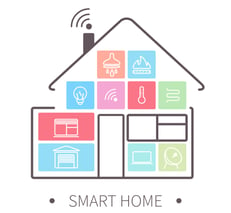

Smart Home Automation: IoT enables homeowners to automate and control various aspects of their homes, such as lighting, temperature, security, and entertainment systems. Smart devices like thermostats, door locks, and cameras can be remotely monitored and controlled using smartphones or voice commands.
Industrial IoT (IIoT): In industrial settings, IoT technologies optimize processes, improve efficiency, and enhance safety by connecting machines, equipment, and production systems. IIoT applications include predictive maintenance, asset tracking, inventory management, and remote monitoring of critical infrastructure.
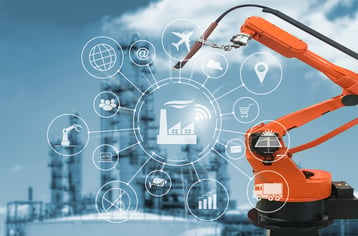

Healthcare Monitoring: IoT devices play a crucial role in remote patient monitoring, wearable health trackers, and telemedicine solutions. These devices collect vital health data, such as heart rate, blood pressure, and glucose levels, allowing healthcare providers to monitor patients' health status in real-time and deliver timely interventions.
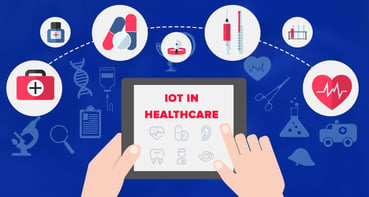

Smart Cities: IoT transforms urban environments into smart cities by integrating sensors and networks to monitor and manage various services, including transportation, energy, waste management, and public safety. Smart city initiatives aim to improve sustainability, reduce traffic congestion, enhance public services, and enhance overall quality of life.
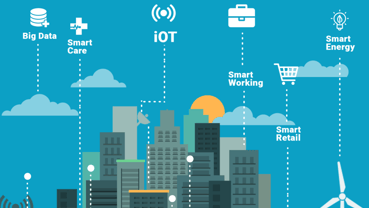

Agriculture and Environmental Monitoring: IoT applications in agriculture include precision farming, crop monitoring, irrigation management, and livestock tracking. Environmental monitoring systems leverage IoT sensors to collect data on air quality, water quality, weather conditions, and biodiversity, aiding in conservation efforts and disaster management.

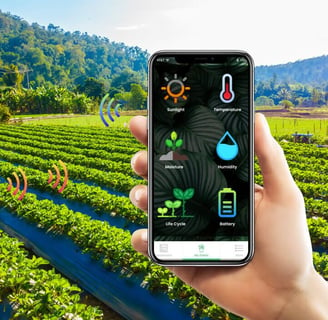


Introduction:
The Internet of Things (IoT) is revolutionizing the way we interact with the world around us, connecting everyday objects to the internet and enabling them to communicate and share data. In this blog post, we'll delve into the fascinating world of IoT, exploring its applications, benefits, challenges, and future prospects.
Understanding the Internet of Things:
The Internet of Things refers to the network of interconnected devices, sensors, and objects that collect and exchange data over the internet. These devices can range from smartphones and wearables to household appliances, industrial machinery, and smart city infrastructure. By embedding sensors, actuators, and communication modules into physical objects, IoT transforms them into "smart" devices capable of sensing, analyzing, and responding to their environment.
Applications of IoT:
Benefits of IoT:
Increased Efficiency: IoT streamlines processes, automates tasks, and optimizes resource utilization, leading to greater efficiency and productivity in various domains.
Improved Decision Making: IoT generates vast amounts of data that can be analyzed to gain insights, identify patterns, and make informed decisions in real-time.
Enhanced Convenience: IoT-enabled devices enhance convenience and simplify daily tasks by offering remote control, automation, and personalized experiences.
Cost Savings: IoT technologies help reduce operational costs, minimize downtime, and optimize resource usage, resulting in significant cost savings for businesses and consumers.
Enhanced Safety and Security: IoT solutions enhance safety and security by providing real-time monitoring, predictive maintenance, and early detection of potential risks or anomalies.
Challenges and Considerations:
Security and Privacy Concerns: IoT devices are vulnerable to cyberattacks, data breaches, and privacy violations, necessitating robust security measures and data protection protocols.
Data Management and Analytics: Managing and analyzing large volumes of IoT data requires scalable infrastructure, advanced analytics tools, and data governance frameworks to derive actionable insights.
Ethical and Social Implications: The widespread adoption of IoT raises ethical concerns regarding data ownership, surveillance, algorithmic bias, and the impact on society, underscoring the importance of ethical AI and responsible technology development.
Best Platform to Learn the IOT:
The Mumbai Coding Lab: designed for students of different age groups. Including Future Ready courses like IOT, Artificial Intelligence and Machine Learning & much more....,These hands-on robotics kits introduce students to robotics and coding concepts in a fun and accessible way, promoting creativity and experimentation.
The most important thing parents should look for while searching for robotics and coding schools is physical accessible distance and flexibility of physical one-to-one and online/virtual classes. At TMCL we are happy to offer both Physical one-to-one and Online classes as they prefer. Our Lab is located in Velentine Apartment Building in Malad East near Oberoi Mall.
Website Link: https://themumbaicodinglab.in/
The most important factor while choosing any after-school program like robotics and coding is affordability, the TMCL programs are easily affordable to anyone.
Future Outlook:
The Internet of Things continues to evolve rapidly driven by advancements in connectivity, sensor technology, artificial intelligence, and edge computing. As IoT adoption grows, we can expect to see further integration of smart devices into our daily lives, the emergence of new IoT applications and business models, and transformative changes across industries, from healthcare and transportation to agriculture and urban planning. By Harnessing the power of IoT, We have the opportunity to create smarter, more connected, and sustainable communities, paving the way for a future powered by intelligent devices and data-driven insights.


Smart Home Automation: IoT enables homeowners to automate and control various aspects of their homes, such as lighting, temperature, security, and entertainment systems. Smart devices like thermostats, door locks, and cameras can be remotely monitored and controlled using smartphones or voice commands.


Healthcare Monitoring: IoT devices play a crucial role in remote patient monitoring, wearable health trackers, and telemedicine solutions. These devices collect vital health data, such as heart rate, blood pressure, and glucose levels, allowing healthcare providers to monitor patients' health status in real-time and deliver timely interventions.


Smart Cities: IoT transforms urban environments into smart cities by integrating sensors and networks to monitor and manage various services, including transportation, energy, waste management, and public safety. Smart city initiatives aim to improve sustainability, reduce traffic congestion, enhance public services, and enhance overall quality of life.


Agriculture and Environmental Monitoring: IoT applications in agriculture include precision farming, crop monitoring, irrigation management, and livestock tracking. Environmental monitoring systems leverage IoT sensors to collect data on air quality, water quality, weather conditions, and biodiversity, aiding in conservation efforts and disaster management.


Industrial IoT (IIoT): In industrial settings, IoT technologies optimize processes, improve efficiency, and enhance safety by connecting machines, equipment, and production systems. IIoT applications include predictive maintenance, asset tracking, inventory management, and remote monitoring of critical infrastructure.
